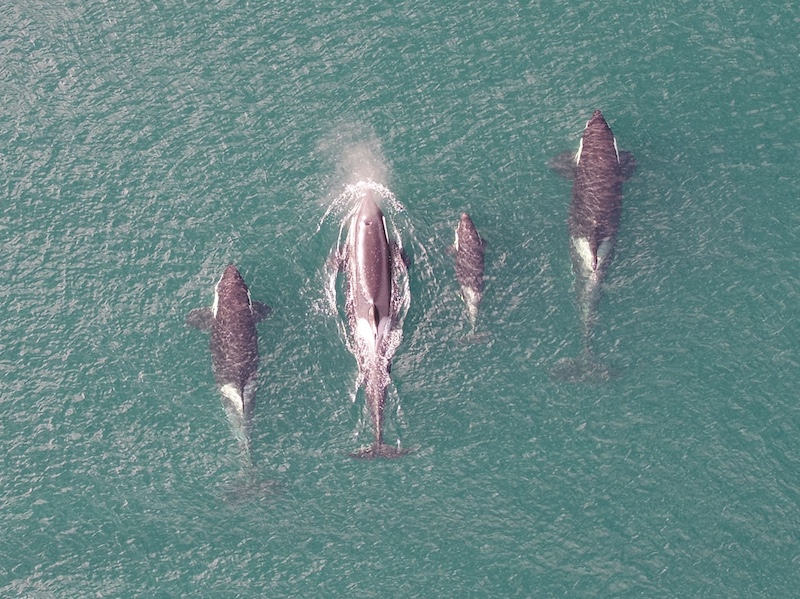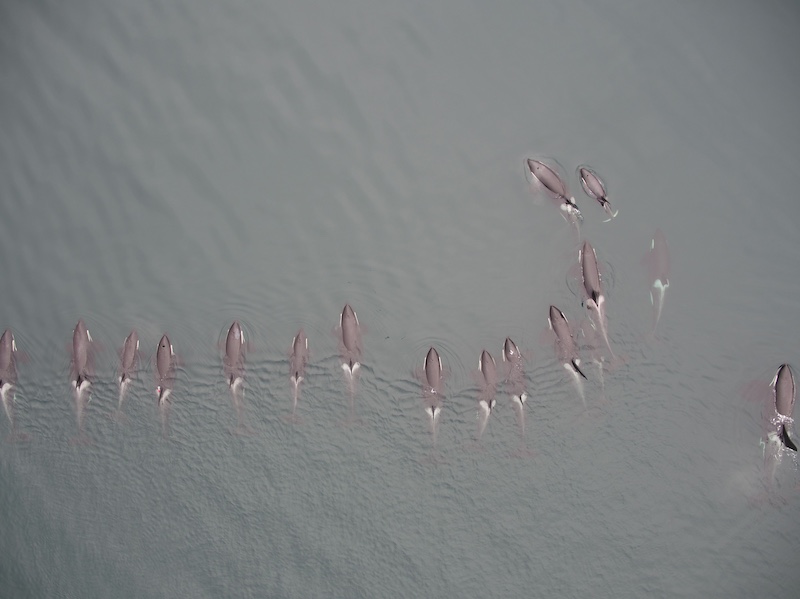
Killer whales need only 1 breath between dives
It’s confirmed. Killer whales usually take just one mighty breath between dives. Previously, scientists weren’t sure. But researchers at the University of British Columbia said on May 15, 2024, that new data from temporary tags attached to the animals and observations from drones have verified the single breaths. This information helps scientists understand how much energy the endangered animals expend.
The researchers published their peer-reviewed findings in the journal PLOS ONE on May 15, 2024.
Killer whales, also known as orcas, are a type of toothed whale with a distinctive black-and-white body. Several populations of killer whales are found across all oceans.
Scientists observed 11 killer whales of two populations off the coast of British Columbia. Northern residents and southern residents are two distinct populations of killer whales in the northeastern Pacific.
Knowing that killer whales take one breath between dives enables scientists to determine the amount of oxygen they inhale. That helps them figure out how much energy the whales expend. Lead author Tess McRae of the University of British Columbia said:
Researchers can then work out if the orcas are getting enough food, including the endangered southern residents, a key factor in their conservation.
Whale-watching with drones and tags
Researchers attached temporary tags to the animals, suction-cupping each tag to a whale using a long pole from a boat. These tags recorded the timing and depth of the whale’s dives.
The researchers also followed most of the tagged whales using unmanned aerial vehicle drones. The drones recorded images and video that enabled scientists to observe the whales’ behavior and breathing patterns when they surfaced.

Better understanding killer whales in the wild
The researchers found killer whales mostly made shallow dives, less than 33 feet (10 meters) deep. And the dives were usually less than a minute in duration. There was a bit of variation in how long the whales dived, depending on the age of the whales and their behavior. Some dives were as brief as a few seconds, while a few lasted about one to five minutes. One whale stayed submerged for 8.5 minutes.
Other whale species are known for deeper dives. For instance, sperm whales, one of the deepest divers among whales, typically plunge to a depth of 1,300 feet (400 meters) and stay submerged for 35 minutes.
Andrew Trites, at the University of British Columbia, is a co-author of the paper. He commented:
Killer whales are like sprinters who don’t have the marathon endurance of blue and humpback whales to make deep and prolonged dives.
Breathing rates varied, depending on what the whales were doing. When they were resting, they took, on average, 1.2 to 1.3 breaths per minute. While they were traveling or foraging for fish, the rate increased to 1.5 to 1.8 breaths per minute. Compare that to humans: We take in about 15 breaths a minute at rest, and 40 to 60 breaths a minute when exercising.
Bottom line: New data, collected using tags and drones, show that killer whales generally take one breath between dives.
Source: Killer whale respiration rates
Via University of British Columbia
Read more: Whales are the biggest living animals: Lifeform of the week











